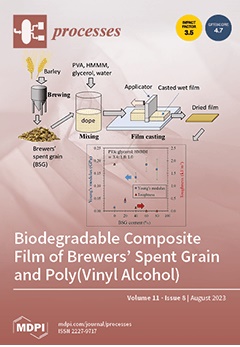View Item
- xmlui.general.dspace_homeCentros e Institutos de InvestigaciónCIAP. Centro de Investigaciones AgropecuariasInstituto de Patología VegetalArtículos científicosxmlui.ArtifactBrowser.ItemViewer.trail
- DSpace Home
- Centros e Institutos de Investigación
- CIAP. Centro de Investigaciones Agropecuarias
- Instituto de Patología Vegetal
- Artículos científicos
- View Item
Plant-Derived Essential Oils and Aqueous Extract as Potential Ingredients for a Biopesticide: Phytotoxicity in Soybean and Activity against Soybean Mosaic Virus
Abstract
Soybean mosaic disease, caused by the soybean mosaic virus (SMV), is responsible for major
losses in yield and seed quality worldwide. Although resistant cultivars are used for its prevention
and control, an alternative strategy could consist of applying environmentally friendly antimicrobial
agents, such as extracts and essential oils (EOs) of aromatic plants. This study assessed an extract of
Achyrocline satureioides and EOs of Minthostachys
[ver mas...]
Soybean mosaic disease, caused by the soybean mosaic virus (SMV), is responsible for major
losses in yield and seed quality worldwide. Although resistant cultivars are used for its prevention
and control, an alternative strategy could consist of applying environmentally friendly antimicrobial
agents, such as extracts and essential oils (EOs) of aromatic plants. This study assessed an extract of
Achyrocline satureioides and EOs of Minthostachys verticillata, Origanum vulgare, and Thymus vulgaris
in terms of their phytotoxicity in soybean. Since all the concentrations tested were found to be safe,
the activity of each product against SMV was then assayed in vivo, i.e., in experimentally infected
soybean plants. The parameters measured were plant height, wet weight, and virus titer. All the
treated plants had a greater height and weight than those in the viral control group. The EOs of M.
verticillata (0.80 mg/mL) and T. vulgaris (0.71 mg/mL) inhibited the production of viral antigens, as
determined by an ELISA test. These findings could encourage further studies aimed at developing
an effective biopesticide against SMV.
[Cerrar]

Author
Carezzano, María Evangelina;
Reyna, Pablo Gastón;
Accotto, Efrén;
Giordano, Walter;
Oliva, María de las Mercedes;
Rodriguez Pardina, Patricia;
Sabini, María Carola;
Fuente
Processes 11(8): 2265 (Published: 27 July 2023)
Date
2023-07-27
Editorial
MDPI
ISSN
2227-9717
Formato
pdf
Tipo de documento
artículo
Palabras Claves
Derechos de acceso
Abierto
 Excepto donde se diga explicitamente, este item se publica bajo la siguiente descripción: Creative Commons Attribution-NonCommercial-ShareAlike 2.5 Unported (CC BY-NC-SA 2.5)
Excepto donde se diga explicitamente, este item se publica bajo la siguiente descripción: Creative Commons Attribution-NonCommercial-ShareAlike 2.5 Unported (CC BY-NC-SA 2.5)
Metadata
Show full item recordRelated items
Showing items related by title, author, creator and subject.
-
Relative incidence of cucurbit viruses and relationship with bio-meteorological variables
Pozzi, Elizabeth Alicia; Bruno, Cecilia Inés; Luciani, Cecilia; Celli, Marcos Giovani; Conci, Vilma Cecilia; Perotto, Maria Cecilia (Springer, 2020-02)Environmental heterogeneity can shape the plant-virus relationship, furthering the appearance of new diseases in crops, or altering disease incidence and severity. In this work, we studied the virus association with ... -
Virosis en zapallito de tronco
Perotto, Maria Cecilia (EEA San Pedro, INTA, 2022)Las principales virosis que afectan al zapallito redondo son las producidas por virus del género Potyvirus. Hay 4 especies de este grupo presentes en Argentina, estos son: Watermelon mosaic virus (WMV), Zucchini yellow ... -
Enfermedades del Poroto
Ploper, Leonardo Daniel; González, Victoria del V.; Rodriguez Pardina, Patricia; Díaz, Cecilia G.; Vizgarra, Oscar N. (Asociación Argentina de Fitopatólogos, 2024)El género Phaseolus (familia Fabaceae) está compuesto por más de 70 especies botánicas originarias de Mesoamérica y América del Sur. Incluye varias especies de interés hortícola, entre las que se pueden mencionar P. vulgaris ...


